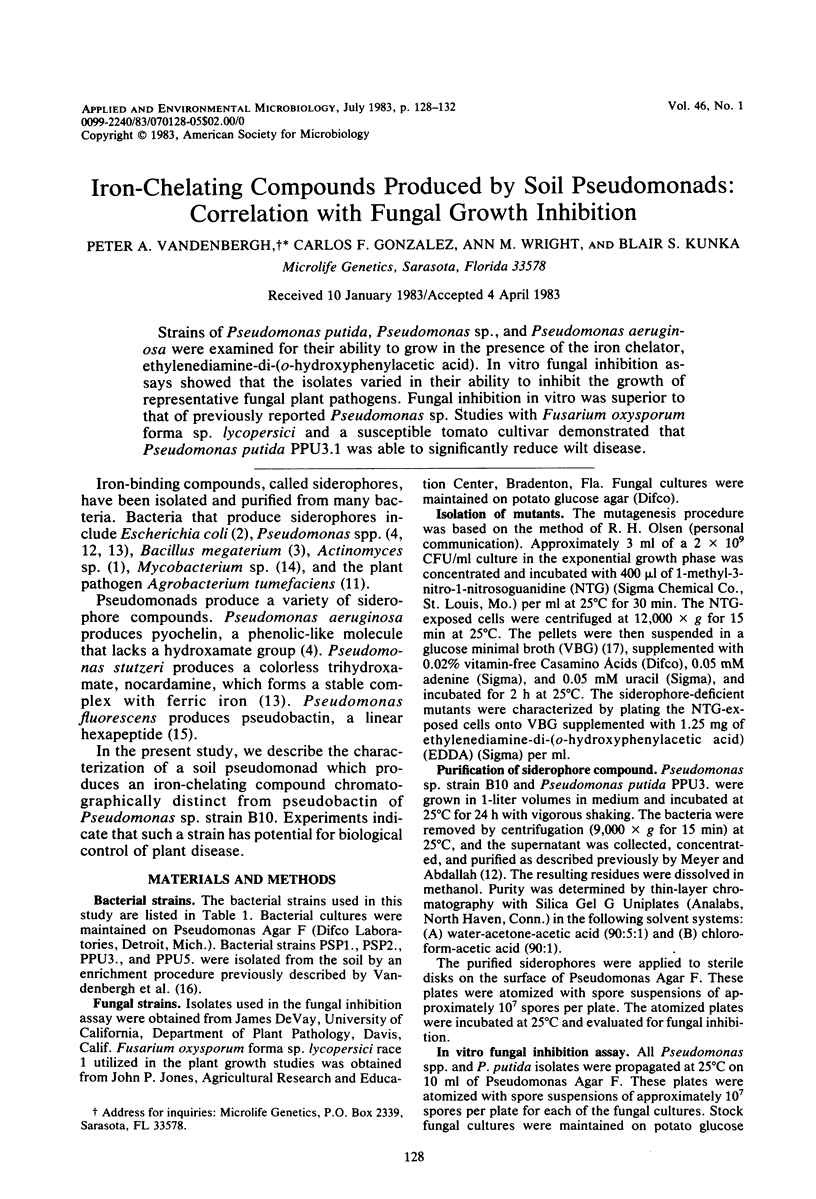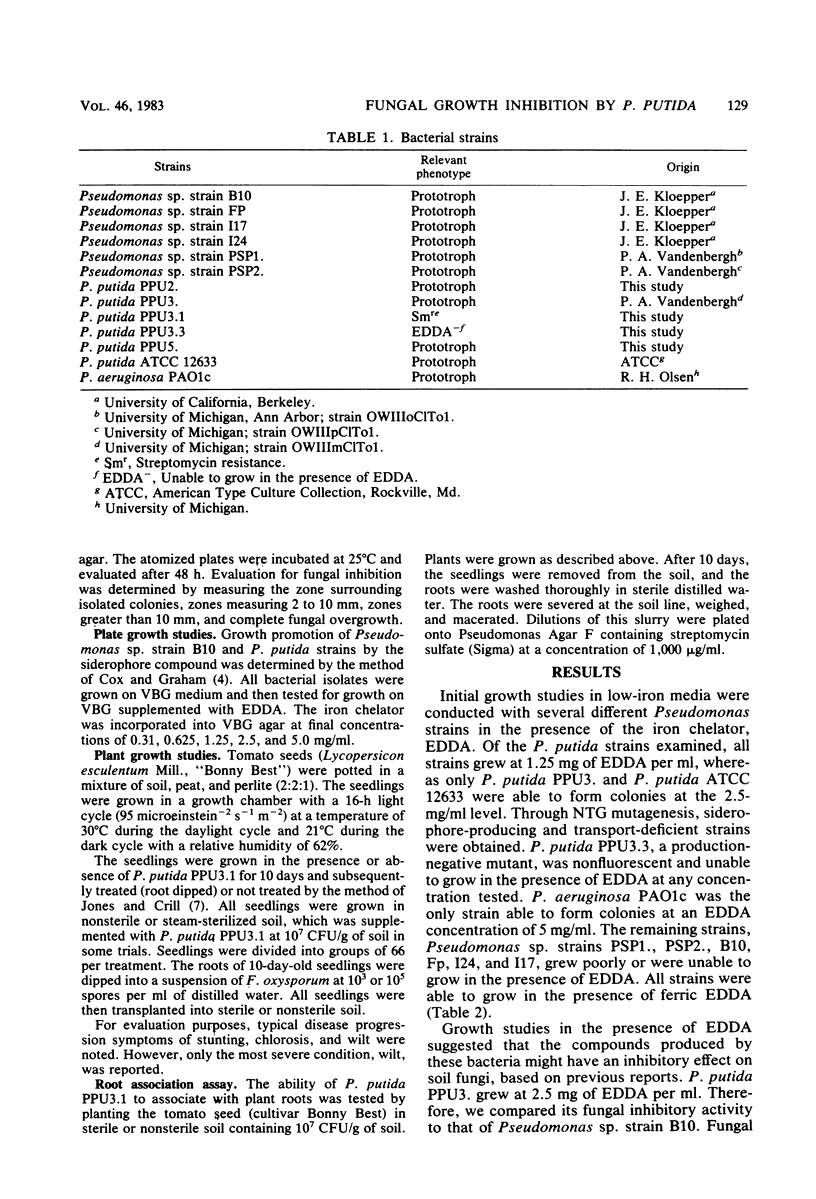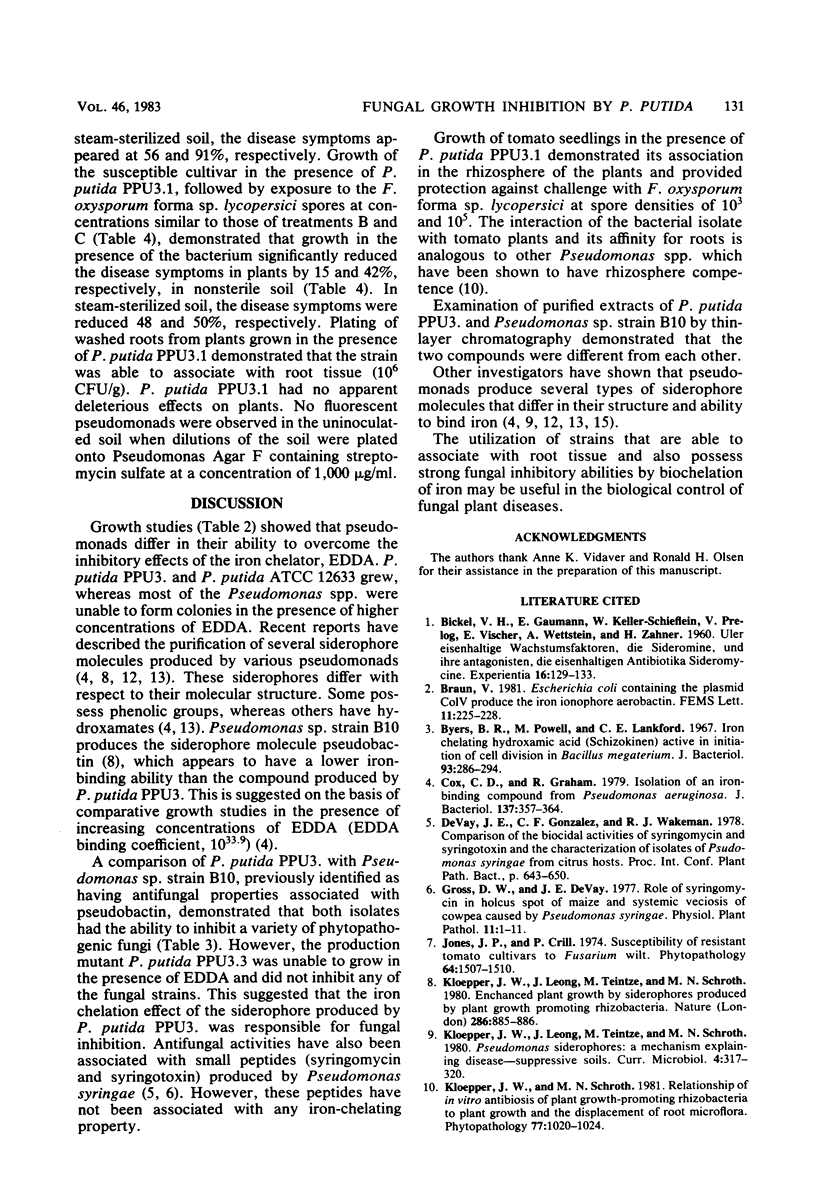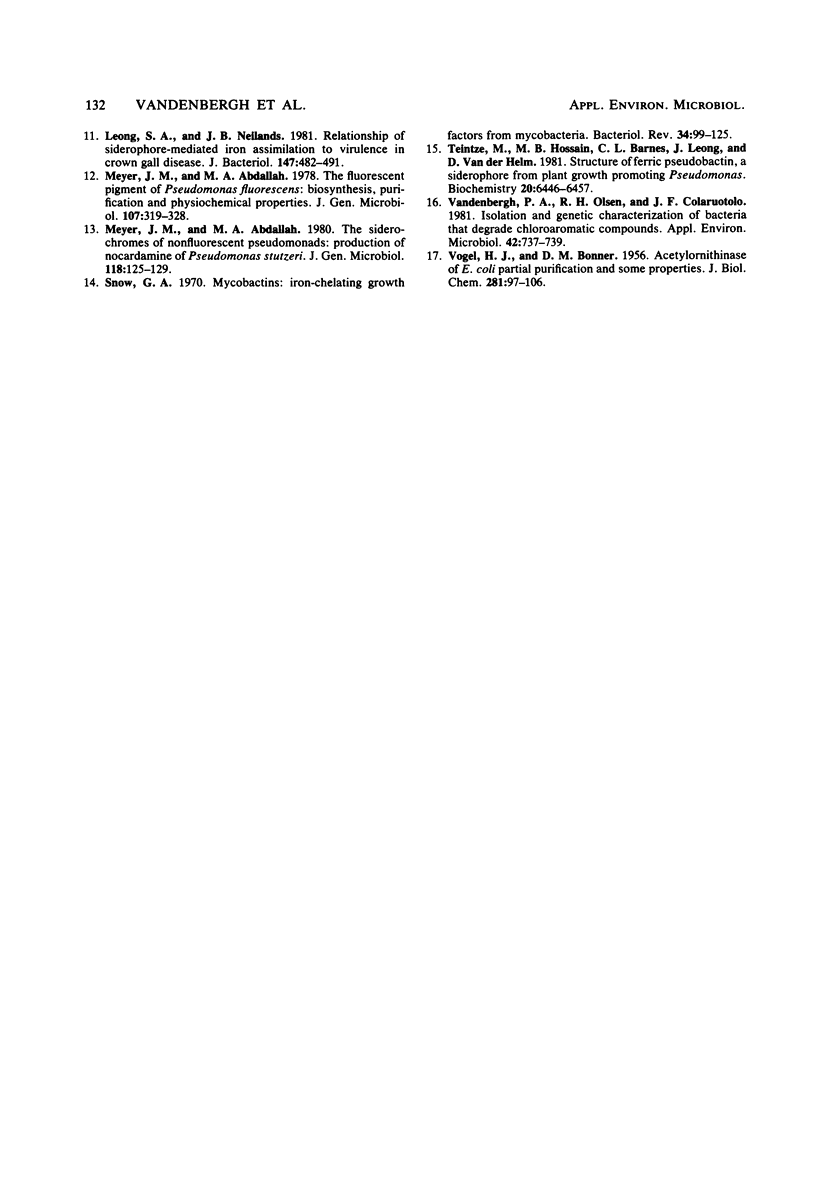Abstract
Strains of Pseudomonas putida, Pseudomonas sp., and Pseudomonas aeruginosa were examined for their ability to grow in the presence of the iron chelator, ethylenediamine-di-(o-hydroxyphenylacetic acid). In vitro fungal inhibition assays showed that the isolates varied in their ability to inhibit the growth of representative fungal plant pathogens. Fungal inhibition in vitro was superior to that of previously reported Pseudomonas sp. Studies with Fusarium oxysporum forma sp. lycopersici and a susceptible tomato cultivar demonstrated that Pseudomonas putida PPU3.1 was able to significantly reduce wilt disease.
Full text
PDF




Selected References
These references are in PubMed. This may not be the complete list of references from this article.
- BICKEL H., GAEUMANN E., KELLER-SCHIERLEIN W., PRELOG V., VISCHER E., WETTSTEIN A., ZAEHNER H. [On iron-containing growth factors, sideramines, and their antagonists, the iron-containing antibiotics, sideromycins]. Experientia. 1960 Apr 15;16:129–133. doi: 10.1007/BF02157712. [DOI] [PubMed] [Google Scholar]
- Byers B. R., Powell M. V., Lankford C. E. Iron-chelating hydroxamic acid (schizokinen) active in initiation of cell division in Bacillus megaterium. J Bacteriol. 1967 Jan;93(1):286–294. doi: 10.1128/jb.93.1.286-294.1967. [DOI] [PMC free article] [PubMed] [Google Scholar]
- Cox C. D., Graham R. Isolation of an iron-binding compound from Pseudomonas aeruginosa. J Bacteriol. 1979 Jan;137(1):357–364. doi: 10.1128/jb.137.1.357-364.1979. [DOI] [PMC free article] [PubMed] [Google Scholar]
- Leong S. A., Neilands J. B. Relationship of siderophore-mediated iron assimilation to virulence in crown gall disease. J Bacteriol. 1981 Aug;147(2):482–491. doi: 10.1128/jb.147.2.482-491.1981. [DOI] [PMC free article] [PubMed] [Google Scholar]
- Snow G. A. Mycobactins: iron-chelating growth factors from mycobacteria. Bacteriol Rev. 1970 Jun;34(2):99–125. doi: 10.1128/br.34.2.99-125.1970. [DOI] [PMC free article] [PubMed] [Google Scholar]
- Teintze M., Hossain M. B., Barnes C. L., Leong J., van der Helm D. Structure of ferric pseudobactin, a siderophore from a plant growth promoting Pseudomonas. Biochemistry. 1981 Oct 27;20(22):6446–6457. doi: 10.1021/bi00525a025. [DOI] [PubMed] [Google Scholar]
- VOGEL H. J., BONNER D. M. Acetylornithinase of Escherichia coli: partial purification and some properties. J Biol Chem. 1956 Jan;218(1):97–106. [PubMed] [Google Scholar]
- Vandenbergh P. A., Olsen R. H., Colaruotolo J. F. Isolation and genetic characterization of bacteria that degrade chloroaromatic compounds. Appl Environ Microbiol. 1981 Oct;42(4):737–739. doi: 10.1128/aem.42.4.737-739.1981. [DOI] [PMC free article] [PubMed] [Google Scholar]


